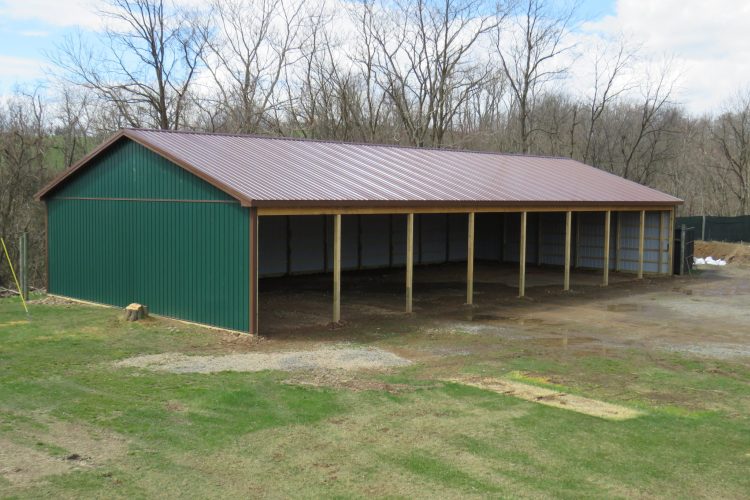
- By SchwebAdmin
- In Pole Barns
Pole Barn Upkeep & Maintenance: A Compact Guide
Pole Barns are durable, versatile, and used for a wide variety of purposes across commercial, agricultural, and residential properties. Their versatility and durability make them a popular choice for storage, workshops, and animal shelters. At JM Riehl Builders we build our Pole Barns with only top-quality materials, but any structure requires regular maintenance to retain its functionality and aesthetic appeal over time. Today we are going to look at some tips and tricks to maintain your Pole Barn so it stays a functional and visually appealing storage structure on your property.
Understanding Pole Barns
Before we dive into maintenance tips, let’s break down what a Pole Barn is to better understand how we maintain them. A pole barn is a storage structure with high ceilings and no basement that is supported by poles anchored in the ground instead of resting on a foundation. They are very durable because the supporting poles transfer the building’s weight directly into the ground. Pole barns consist of 5 main components; poles, trusses, roofing, siding, and the foundation. Maintaining the 5 components of a pole barn is essential to the structure’s longevity, and that maintenance starts with regular inspections.
Inspecting Your Pole Barn
Regularly inspecting your pole barn will allow you to identify any issues early on, which can help prevent further damage. We recommended starting your inspection by walking around the outside of your pole barn and inspecting the siding and roofing. Keep an eye out for debris resting on the roof, which can lead to moisture buildup and rust. Check the siding for any damage from falling debris that could let moisture into the building.
Once you have inspected the exterior of your pole barn, make your way inside to check the ground. This could be a concrete slab that you built your pole barn around or a dirt floor. Pay special attention to the areas where the poles meet the ground; damage to these foundations could mean disaster for your pole barn. As you inspect the inside of your pole barn, also keep an eye out for any signs of rot on the support poles and trusses. These should be addressed immediately to avoid further damage to other areas of your pole barn.
Seasonal Pole Barn Maintenance
Inspecting your pole barn will help you identify problems that could require maintenance, but we also recommend seasonal preventative maintenance. These are things you should do every year to prepare your pole barn for inclement weather in various seasons.
Winter Pole Barn Maintenance
The most important seasonal maintenance will occur before and during the winter season. If you have plumbing in your pole barn, make sure that your pipes are insulated to prevent a pipe bursting. It is also important to clear large snow buildup off of your roof because large amounts of snow can collapse the roof, or become a hazard if it slides off unexpectedly. Use extreme caution if you plan on doing snow removal yourself, or hire a professional. You should also periodically check that all ventilation areas are clear of snow and debris to prevent moisture buildup and mold growth.
Summer Pole Barn Maintenance
When it comes to summer pole barn maintenance, we like to start with one of our regular inspections. Inspect the roof for signs of damage from heavy snow or winds. Clean the gutters and downspouts to prevent water buildup that can lead to rust and rot. Also, we suggest trimming back vegetation that may have crept towards the pole barn during spring months to prevent pests from accessing the structure.
If you follow these steps your pole barn will stay in tip-top shape and look its best. If you’re in the market for a pole barn, our team would love to speak with you. Contact us today for a quote!






